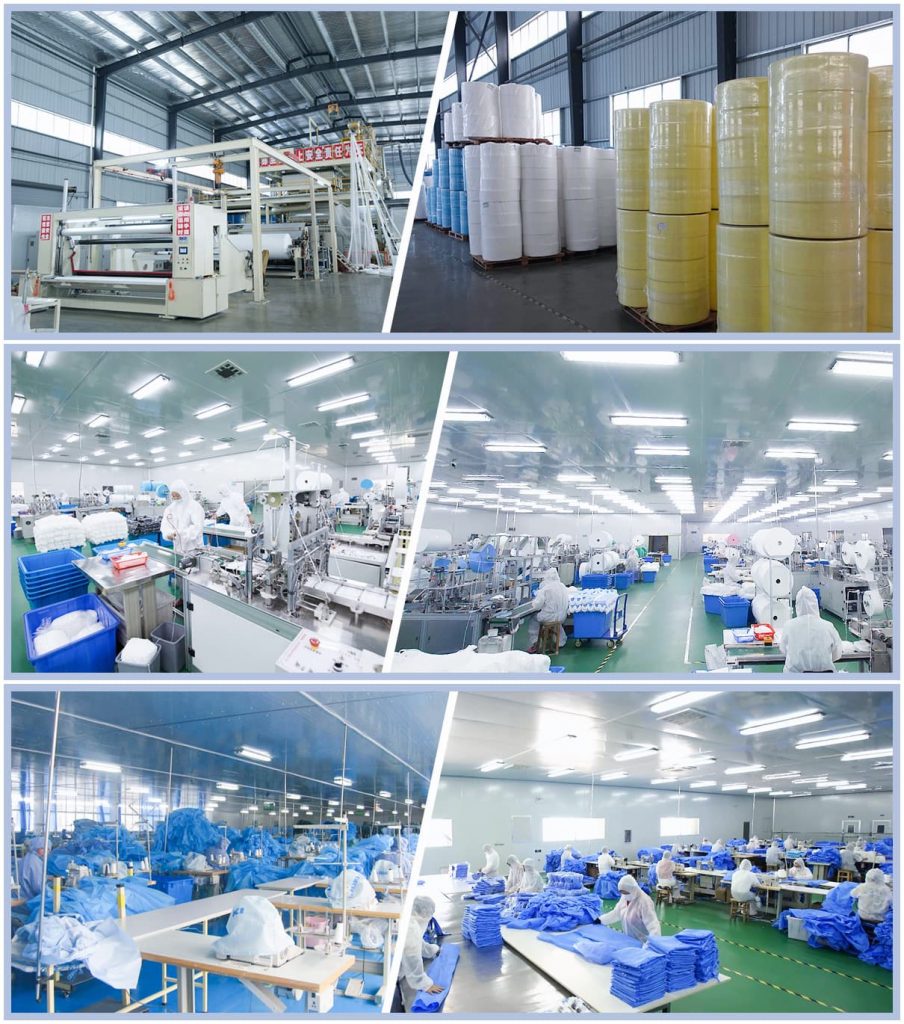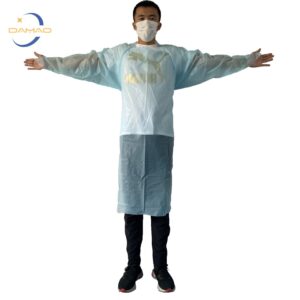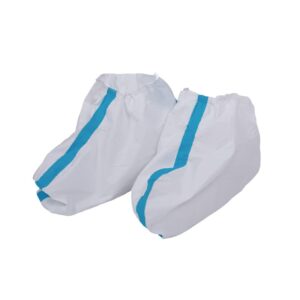65gsm Medical Hazmat Suit: Disposable Protective Clothing
Product Details
Specification: PP + PE non woven material
Feature Description: anti virus / waterproof / breathable
Fabric weight: 65 ± 5gsm
Garment weight: 288g
Executive standard: GB 19082-2009; European standard: en14605-type 3,4 en13034-type 6; American Standard: AAMI pb70 Level 3
Washing times: Disposable
order contact:[email protected]
Description
Protection is the most important performance requirement of medical Hazmat Protective Suit, mainly including liquid barrier, filtration efficiency and so on.
Liquid barrier properties mean that medical Hazmat Protective Suit should be able to resist water seepage, blood penetration, and surface moisture resistance. Avoid transmitting the virus carried by the patient’s blood, body fluids and other secretions to medical staff during medical work or surgery. The test standards and methods of anti-blood penetration in GB 19082 refer to the international standard ISO 16603, and the technical indicators of medical Hazmat Protective Suit in my country are required to be at the forefront of the world level.
Filtration efficiency refers to the percentage of Hazmat Protective Suit that filters out particulate matter in the air (solid, liquid or solid-liquid mixed particulate matter suspended in the air, such as microorganisms, dust, smoke and mist, etc.). The GB standard stipulates that the filtration efficiency of key parts of protective clothing and seams to non-oily particles is not less than 70%.
 The most important indicator of comfort is moisture permeability. In order to enhance the protective effect, protective clothing fabrics are usually processed by lamination or lamination, which is not conducive to perspiration and heat removal after long-term wear. The improvement of the moisture permeability of medical protective clothing can improve the experience of medical staff and reduce the sultry feeling and physical discomfort caused by long-term work. In addition, skin irritation is also a comfort index requirement in the GB standard, and protective clothing cannot bring uncomfortable skin irritation to the user.
The most important indicator of comfort is moisture permeability. In order to enhance the protective effect, protective clothing fabrics are usually processed by lamination or lamination, which is not conducive to perspiration and heat removal after long-term wear. The improvement of the moisture permeability of medical protective clothing can improve the experience of medical staff and reduce the sultry feeling and physical discomfort caused by long-term work. In addition, skin irritation is also a comfort index requirement in the GB standard, and protective clothing cannot bring uncomfortable skin irritation to the user.
Physical and mechanical properties mainly refer to the strength and durability of medical protective clothing materials. Avoid being torn, punctured, and damaged by external forces to provide channels for the spread of bacteria and viruses, thereby weakening the protective effect. The GB standard has clear requirements for the breaking strength and breaking elongation of protective clothing materials, and the European standard EN 14126:2003 (performance requirements and test methods for protective clothing against viruses) requires protective clothing materials to have certain wear resistance, Tear and puncture resistance.
Safety is a consideration of the safety of the medical staff themselves as well as the patients and the surrounding environment. For example, the GB19082 standard requires
Antistatic property is to prevent the electrostatic adsorption of dust and bacteria from being harmful to patients and surrounding personnel, and to prevent sparks generated by static electricity from detonating volatile gases in the operating room and affecting the accuracy of precision instruments. Microorganisms, non-combustion, and ethylene oxide residue after sterilization are also important safety indicators.







